|
|
previous 20 results
Works included (see Bodemann, Die Leibnizhandschriften der Königlichen öffentlichen Bibliothek zu Hannover, Olms:Hildesheim, 1966):
1. "Über die städtische Wasserkunst"
2. "Eine Last durch rauhe und tieffe wege auff glatten fortschreitenden Boden und also sehr leicht zu führen. 16. Dec. 1686"
3. "Propositio machinae hydrographicae"
etc.
 Source information Source information
 Permanent URI:http://echo.mpiwg-berlin.mpg.de/MPIWG:XPTPU4Y5 Permanent URI:http://echo.mpiwg-berlin.mpg.de/MPIWG:XPTPU4Y5
|
Collection of Manuscripts on Nature, Medical Science and Technics by Gottfried Wilhelm Leibniz (1646-1716)
|
|
Works included (see Bodemann, Die Leibnizhandschriften der Königlichen öffentlichen Bibliothek zu Hannover, Olms:Hildesheim, 1966):
1. "Memoire etlicher kleiner curiositäten, so man meist alle in 1 oder 2 tagen demonstriren kan"
2. "Modus coagulandi et tingendi Mercurium vulgi in aureum colorem"
3. "Observationes chymicae et physicae"
etc.
 Source information Source information
 Permanent URI:http://echo.mpiwg-berlin.mpg.de/MPIWG:WV91ZBCF Permanent URI:http://echo.mpiwg-berlin.mpg.de/MPIWG:WV91ZBCF
|
Collection of Manuscripts on Nature, Medical Science and Technics by Gottfried Wilhelm Leibniz (1646-1716)
|
|
|
|
Collection of Historical Sources Related to Leibniz and Contemporaries
|
|
|
|
Collection of Historical Sources Related to Leibniz and Contemporaries
|
|
|
|
Collection of Historical Sources Related to Leibniz and Contemporaries
|
|
The Gottfried Wilhelm Leibniz Library (State Library of Lower Saxony, Hannover), as the former Königliche Bibliothek Niedersachsen, hosts a large collection of copperplates from the 17th and 18th centuries.
The collection comprises about 850 original plates. In addition, there are a number of prints and drafts that obviously belong to the collection; related plates, however, are no longer extant.
Most of the plates were created for illustrations of historical genealogies, which were planned or edited within the framework of the Library.
The plates contain portraits of Lower-Saxonian monarchs over the centuries, illustrations of medals and coins, and also facsimiles of official documents on the history of Lower-Saxony and the Roman-German Empire.
About 100 plates are related to the "Ehrenkleinot des von Uhrankunfft Fürstlichen Hertzogen-Haußes Brunswig-Lüneburg" by Johann Heinrich Hoffmann, a work that was never published.
Leibniz considered reusing some of these plates for his publication on the history of the House of Welf.
Leibniz, after becoming head of the Königliche Bibliothek Niedersachsen, also saw to it that the famous engraver, Nicolaus Seeländer was employed in the Library.
Leibniz himself also had many ideas and proposals for illustrations, which he had drafted for the engravers.
The Gottfried Wilhelm Leibniz Library (State Library of Lower Saxony, Hannover) presents within the ECHO collection digitizations of the copperplates as well as research data, which have been prepared with friendly permission by Reinhard Oberschelp, the author of
Oberschelp, Reinhard: Kupferstichplatten in der Gottfried Wilhelm Leibniz Bibliothek. Katalog. Hameln: Niemeyer, 2005.
Partner institutions and contributors:
|
Collection of Copperplates
|
|
 Clarke, Samuel; Leibniz, Gottfried Wilhelm, A collection of papers, which passed between the late learned Mr. Leibnitz, and Dr. Clarke, in the years 1715 and 1716 : relating to the principles of natural philosophy and religion ; with an appendix, to which are added, letters to Dr. Clarke concerning liberty and necessity ... Also remarks upon a book, entituled 'A philosophical enquiry concerning human liberty', 1717 Clarke, Samuel; Leibniz, Gottfried Wilhelm, A collection of papers, which passed between the late learned Mr. Leibnitz, and Dr. Clarke, in the years 1715 and 1716 : relating to the principles of natural philosophy and religion ; with an appendix, to which are added, letters to Dr. Clarke concerning liberty and necessity ... Also remarks upon a book, entituled 'A philosophical enquiry concerning human liberty', 1717
 Source information Source information
 Permanent URI:http://echo.mpiwg-berlin.mpg.de/MPIWG:3MQCD6MH Permanent URI:http://echo.mpiwg-berlin.mpg.de/MPIWG:3MQCD6MH
|
Collection of Historical Sources Related to Leibniz and Contemporaries
|
|
|
|
Collection of Manuscripts on Nature, Medical Science and Technics by Gottfried Wilhelm Leibniz (1646-1716)
|
|
The special problems for any comprehensive treatment of the scientific investigations of Leibniz arise, on the one hand, from the fact that essential parts of his work have not been edited and, on the other hand, from the universality of his scientific interests (in his case ranging from physics through theory of law, linguistic philosophy, and histeriography to particular questions of dogmatic theology). In view of this diversity of interests and the fragmentary, or rather encyclopedic, character of his work, the expositor is confronted with the task of achieving, at least in the part, what Leibniz himself, following architectonic principles (within the framework od scientia generalis), was unable to accomplish.
Leibniz' work is rather a marked metapysical and methodological concern that systematically expresses variations on the same theme in various special fields and underlies Leibniz' quest to establish a unified system of knowledge.
The writings of Leibniz are based on his search for the ultimate grounds of mechanism that led him to metaphysics and the doctrine of entelechies. Instead of setting out his philosophy systematically in a magnum opus, Leibniz presented piecemeal clarifications of his views in works that, in various ways, were inspired by the publications of others, among them Huygens, Hobbes, Descartes, Malebranchem Papin, Arnauld, and Newton.
Partner institutions and contributors:
|
Manuscripts and Related Writings of the Pioneers of the Scientific Revolution
|
|
previous 20 results
Result as RDF-Format
|

 Source information
Source information
 Permanent URI:http://echo.mpiwg-berlin.mpg.de/MPIWG:XPTPU4Y5
Permanent URI:http://echo.mpiwg-berlin.mpg.de/MPIWG:XPTPU4Y5
 Source information
Source information
 Permanent URI:http://echo.mpiwg-berlin.mpg.de/MPIWG:WV91ZBCF
Permanent URI:http://echo.mpiwg-berlin.mpg.de/MPIWG:WV91ZBCF
 Leibniz, Gottfried Wilhelm, LH XXXVIII (Technics),
Leibniz, Gottfried Wilhelm, LH XXXVIII (Technics),


